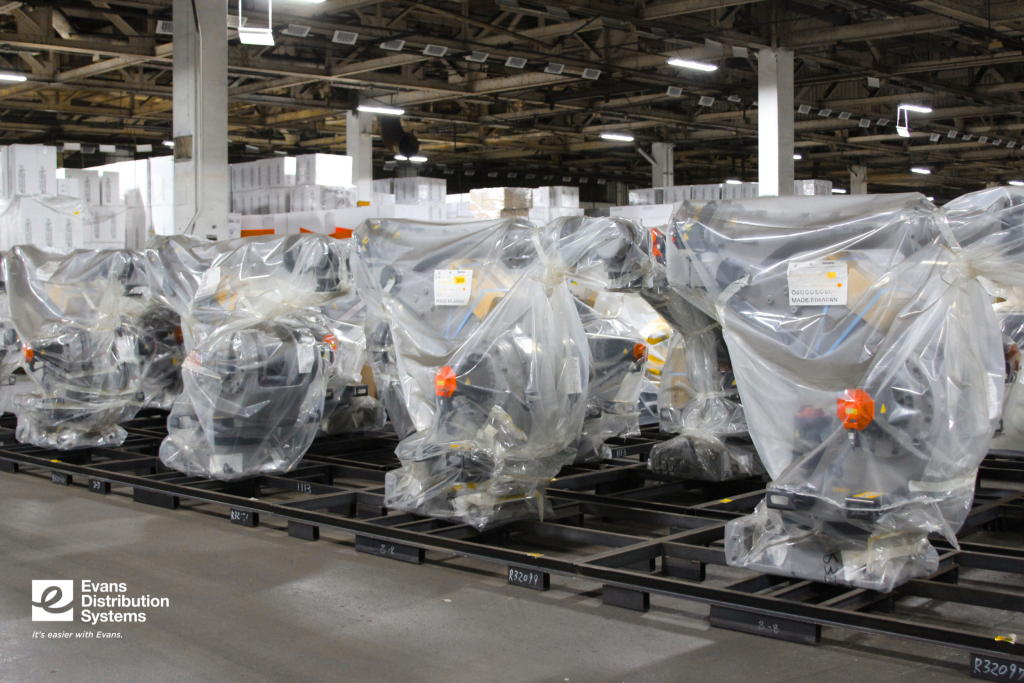
As robotics continues to reshape manufacturing, distribution, and fulfillment, more companies are investing in large, complex automation systems to gain a competitive edge. But when these machines aren’t in use or are in transit between facilities, they require a highly specialized logistics partner to ensure their safety, storage, and longevity. For third-party logistics providers (3PLs), mastering the art of robot logistics means developing efficient strategies for storing, handling, and maintaining some of the most advanced equipment in modern supply chains.
Robots as High-Value Assets
Large industrial robots from robotic arms used in automotive production to full-scale mobile automation units are not ordinary freight. These machines are highly sensitive, incredibly expensive, and often custom-built. That means every step of their logistics journey must be treated with precision and care. Improper storage or handling can lead to costly damage, downtime, or even voided warranties.
For 3PLs, this creates an opportunity to deliver specialized value. Companies that invest in the right infrastructure, equipment, and training can become trusted partners for businesses that need secure, reliable handling of their robotic assets.
Safe and Scalable Storage Solutions
One of the key challenges in robot logistics is storage. These machines are often bulky, heavy, and irregularly shaped, requiring more than just floor space. They need customized racking, reinforced pallets, or crating solutions to keep them stable and secure. Climate-controlled environments may also be necessary to protect sensitive components from humidity, dust, or temperature fluctuations.
An effective robot storage strategy begins with assessment. 3PLs should evaluate the size, weight, and structural vulnerabilities of each unit before assigning a storage solution. Some robots may need to be stored in a disassembled state, while others may require elevated racking or dedicated zones to accommodate safety clearances.
Flexibility is also key. As automation systems evolve, clients may need to store additional parts, software modules, charging docks, or peripheral equipment. A 3PL that can scale space and services quickly becomes an essential extension of the client’s operations.
Proper Handling and Transportation Protocols
Beyond storage, the physical handling of large robots demands special equipment and training. Forklifts with extended forks, cranes, and rigging tools are often required to move robotic systems safely. Equally important is the human side where teams must be trained in how to secure, lift, and load these machines without damaging sensitive parts like sensors, joints, or wiring harnesses.
Documenting every step of the handling process ensures traceability and provides peace of mind for the client. Detailed inspection reports, high-res photographs, and condition tracking should be standard practice for every inbound and outbound movement.
Additionally, 3PLs that offer custom crating or shock-resistant packaging services give clients added protection when robots need to be shipped domestically or internationally.
Compliance, Insurance, and Security
Due to the value and complexity of robotic systems, proper documentation and insurance are essential. 3PLs must ensure that all inventory is logged accurately, with serial numbers, photos, and detailed specifications. Warehouses should be equipped with 24/7 surveillance, access control, and clear protocols for who can interact with high-value goods.
For companies with leased or temporarily unused robots, secure storage is not just a convenience, but a cost-effective alternative to keeping idle equipment onsite.
Becoming a Strategic Robotics Partner
Handling large automation equipment requires more than standard warehousing, it demands a high level of logistics precision, safety, and customization. As more industries adopt robotics, the need for 3PLs with this level of expertise will only grow.
By investing in specialized equipment, warehouse infrastructure, and staff training, 3PLs can become a vital partner for clients managing complex robotics fleets. Whether robots are in transit, awaiting deployment, or temporarily decommissioned, a skilled logistics partner ensures they’re ready to perform when and where they’re needed.
Specialized Logistics for the Machines That Power Tomorrow
Mastering the art of robot logistics is about more than moving machines, it’s about protecting technology that drives innovation. For 3PLs, offering safe, scalable, and precise services for large automation systems is a powerful way to stand out in a competitive market and support the future of advanced manufacturing.
Evans Distribution has stored and transported large industrial robots for years. With expert handling and trusted protocols in place, we ensure each piece of equipment is carefully managed from arrival to departure. Our experienced team, specialized equipment, and climate-controlled warehouse space make us a reliable partner for manufacturers and automation companies looking to protect their high-value assets.
Learn more about our experience. Contact Evans today to speak with a logistics expert.
